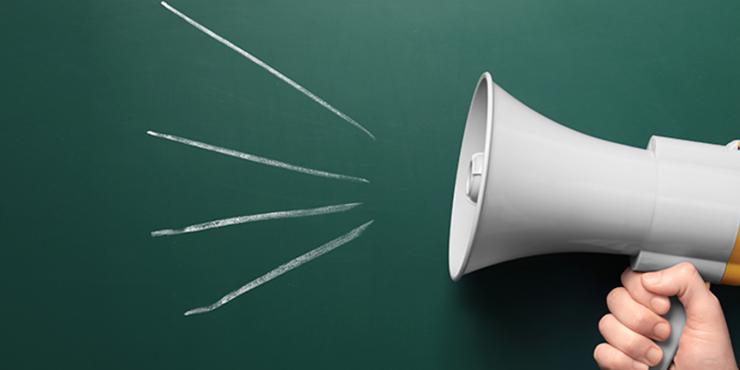New Patent Office Guidance Takes Steps Toward Clarifying Subject Matter Eligibility
The USPTO’s latest Guidance on subject matter eligibility takes some positive steps toward stabilizing the examination rules in the context of complex and dynamic case law. The USPTO is accepting comments about the Guidance until March 16, 2015, and plans to release additional examples and refinements. Pierce Atwood will keep you informed of these developments. Please contact us if you would like to discuss submitting comments to the USPTO.
On December 16, the USPTO published its long-awaited 2014 Interim Guidance on Patent Subject Matter Eligibility (79 Fed. Reg. 74618-74633). The Guidance’s primary purpose is to provide a framework for examiners to examine patent applications for subject matter eligibility. The Guidance applies, to all categories of patentable subject matter, the general two-part test that the Supreme Court set forth in Mayo v. Prometheus: (1) Is the claim “directed to [a judicial exception]?”; and (2) If so, does the claim recite “additional elements that amount to significantly more than the judicial exception?”
The Guidance presents a shift from the analytical framework set forth in the March 2014 Mayo/Myriad guidance, which is superseded by the Guidance. But the Guidance also leaves many issues unresolved. Some of those issues, discussed below, include consistency in examining a claim "as a whole," conditions for claims that qualify for a streamlined analysis, and defining an "inventive concept" in various areas of technology.
1. Focusing on whether the claim “as a whole” is “directed to” a judicial exception
As required by Mayo part one, the Guidance emphasizes that the claim should be examined “as a whole” to determine whether the claim is “directed to” a judicial exception. While this appears to be a step forward, the Guidance collapses “directed to” and “recites”: “A claim is directed to a judicial exception when [a judicial exception] is recited (i.e, set forth or described) in the claim.”
Practice Tip: The Guidance focuses the examination of subject matter eligibility on preemption, i.e., the risk that a claim would “tie up” the excepted subject matter. Therefore, applicants may be able to overcome subject matter eligibility rejections by showing that the claim, considered as a whole, does not tie up the excepted subject matter.
2. Streamlined analysis for claims whose “eligibility will be self-evident”
The Guidance provides a “streamlined eligibility analysis,” which allows certain claims to bypass the extensive Mayo analysis. This pathway is available to claims that “clearly do not seek to tie up the judicial exception.” The Guidance does not define the conditions for such claims but provides some examples.
Practice Tip: Whenever possible, applicants should draft claims for which they can argue that the eligibility of the claim, considered as a whole, is self-evident because it clearly would not tie up excepted subject matter. Some clues may be derived from the examples in the Guidance.
3. Broader definition of “markedly different” for nature-based products
The Guidance has also refocused the analysis of claims that recite a product of nature, which would not be subject to further scrutiny if the nature-based product exhibits “markedly different” characteristics from a naturally occurring counterpart. Unlike the March 2014 Mayo/Myriad guidance, the Guidance recognizes that the markedly different characteristics can include not only structural properties, but also functional or other properties.
Practice Tip: The Guidance proscribes that “even a small change can result in markedly different characteristics.” The expansion of those characteristics to include functional and other non-structural properties provides fodder to argue for patentability in a manner analogous to an unexpected results argument in the face of a prima facie case of obviousness.
4. Searching for an “inventive concept” in Mayo test, part two
Regarding part two of the Mayo test, the Guidance primarily relies on case law-derived categories of limitations that qualify as “significantly more” than a judicial exception.
Together with the Guidance, the USPTO published updated Nature-Based Product Examples that replace the previous controversial examples included in the March 2014 Mayo/Myriad guidance. Although the Guidance does not add much clarity to the subject matter eligibility of claims that are directed to computer-based technologies or those that are directed to business method applications, it reiterates that none of these two types of claims are categorically ineligible, and that they do not carry any special requirement for eligibility. The USPTO has indicated that additional examples are forthcoming.
Practice Tip: Defining what qualifies as “significantly more” than a judicial exception is a difficult task for both the applicant and the examiner. The Guidance requires the examiner to (1) identify the exception in the claim, (2) explain why it is an exception, (3) identify additional elements of the claim, and (4) explain why the additional elements do not add significantly more to the exception. An applicant may be able to overcome subject matter eligibility rejections by showing that the examiner has not met those requirements.
Click here for additional details and analysis regarding this new Guidance.
